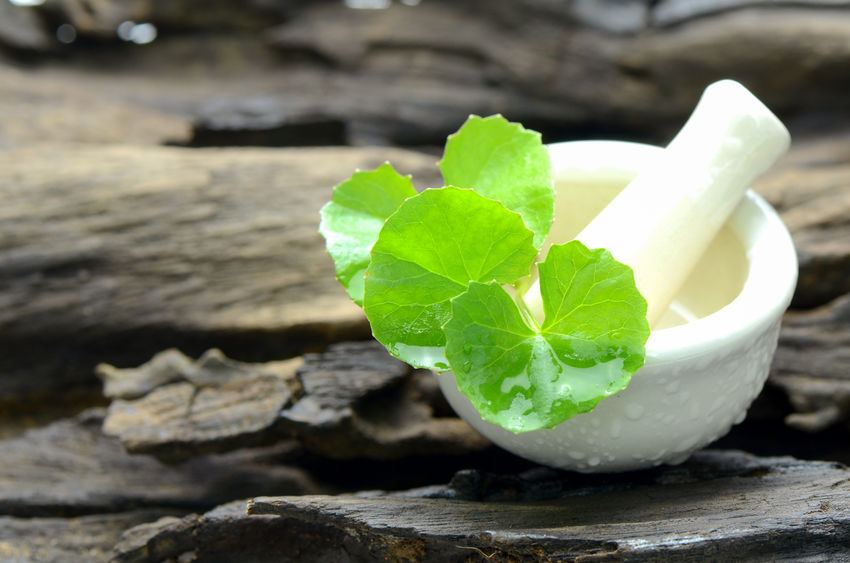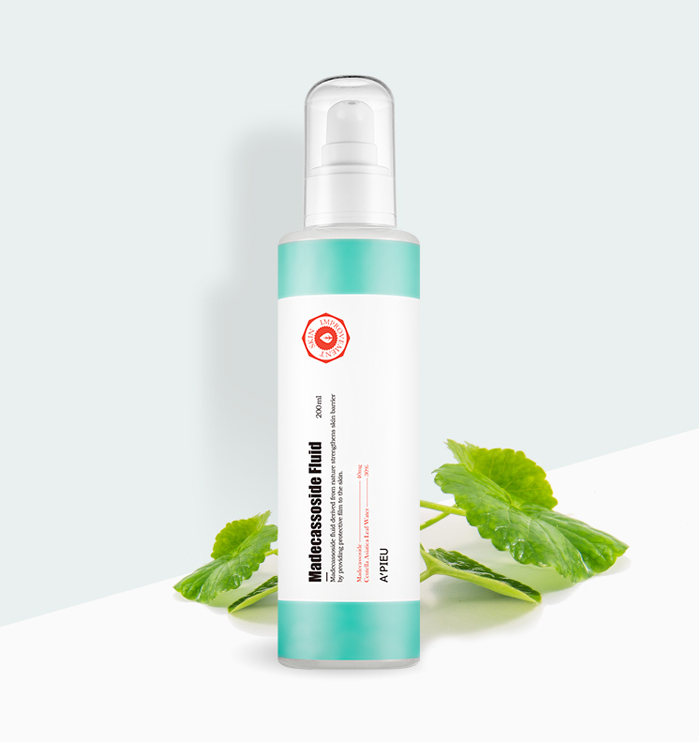Madecassoside 101: How It’s Different from Centella & Why It May Be Just as Important
You may have seen them in an ingredient list of your fave soothing or redness-reducing product. But what exactly are madecassoside, madecassic acid, asiaticoside, and asiatic acid? Turns out, they’re related to skincare’s current favorite star, centella. Here’s what to know.
It’s safe to say that a lot of us have spent the last year or two rubbing a lot of plants on our faces. Centella asiatica went from being the hot new ingredient to what I feel is “staple status,” much like honey/propolis and snail-based products. It doesn’t look like the love for traditional medicinal plants is slowing down either, with mugwort making a strong appearance as well. I love seeing these traditional ingredients being adored by so many people because of their great results; it reminds me of my childhood in Korea, the foods I ate with some of the same plants in them, and I think it’s really amazing how Korea seems to continue to provide innovation in so many ways despite being such a small country.
That being said, I had no idea what the heck madecassoside was when I first saw it on an ingredient list, and when I started seeing asiaticoside along with madecassic acid and asiatic acid as well, I was just as confused as I’m sure many of you out there may be. I knew it was related to the plant-derived soothing goodness that I wanted in my routine, but I thought madecassoside was a different plant I hadn’t heard of and these other components were new ingredients. I was completely wrong, and I want to share what I learned from feverishly reading a stack of scientific studies.

Big disclaimer: I am not a doctor, do not have any type of degree in chemistry or any field related to this type of research. Please take what I have to say with a grain of salt. Or several grains just to be safe. Put on your nerd glasses and journey forth with me, friends.
What are madecassoside & its ilk
As it turns out madecassoside, madecassic acid, asiaticoside, and asiatic acid are all components of the Centella asiatica plant. They are called “triterpenoids” and, in this case, are the components responsible for all the great skin benefits we’ve come to expect from centella. Now if you’re going down the same path as me, you might be asking the same question I did: If they’re all components of Centella asiatica, then why wouldn’t I just use a centella product and call it a day?
Just like with any vegetable or fruit that we might eat, Centella asiatica can vary a lot depending on the climate and the location that it’s grown in, which can translate to different amounts of each of these four components being present. The centella plant, in general, seems to have lower levels of asiatic acid and madecassic acid; isolating these components make it so that we can still reap benefits from them, but give formulators and manufacturers a bit more control over the content contained within a given product.

What does madecassoside et al. do?
As a whole, this little team of triterpenoids (I keep picturing the Avengers, but plants) work together to help promote collagen synthesis and can actually stimulate circulation in your skin as well, which potentially can promote a slimming effect, making everything appear just a bit more lifted. Not like face lift levels of lifted, but it seems it could definitely help out in that department.
They also demonstrated strong antioxidant capabilities in one study, trailing just slightly behind vitamin C (around 85% effectiveness compared to L-ascorbic acid), which combined with the aforementioned collagen synthesis promotion made me think of this little group of ingredients as a less finicky vitamin C. Similar ability to stimulate collagen and provide antioxidants that help boost UV filters, no worrying about oxidation? I’m sold.
The difference between madecassoside & the rest
The research I found showed that these components do have their own individual effects, so depending on what it is that you’re wanting from your product, you may want to focus on one component being more abundant or focused on in a formula than others. Here’s the low down.

Madecassoside
Texture and tone is the name of the game here, with there being potential for aiding in the prevention hyperpigmentation and as well as hypertrophic scarring, which is any raised texture on the skin.
Madecassic acid
This is the component most responsible for the soothing qualities that many of us first think of when it comes to centella products. The reduction of irritation as well as the suppression of inflammation is going to help calm your skin and therefore reduce redness, which I think all of us deal with to a degree.

Asiaticoside
Vitamin C is getting a run for its money in large part due to this member of the team that has shown the most potential for antioxidant capabilities, as well as having a scientifically significant level of antibacterial and fungicidal activity, meaning it’s going to aid in fighting breakouts as well as protect your skin against irritation and stress, particularly when paired with sunscreen.
Asiatic acid
The stimulation of fibroblasts cells and collagen synthesis is most credited to this last member of the crew. This not only results in anti-aging potential, but also helps in healing wounds. Healing breakouts and promoting the generation of new skin cells is a one-stop shop for people who are wanting to slow down premature aging and speed up the healing of acne.
Honestly, doing this piece really just made me fall even harder for the green stuff, and after it seems to have helped combat my partner’s dermatitis, I couldn’t be more sold.
Do y’all use centella or madecassoside et al. in your routine? If you need some suggestions, @sheryll did an awesome overview of centella and featured some great product recommendations if you need a place to start.
Loading...